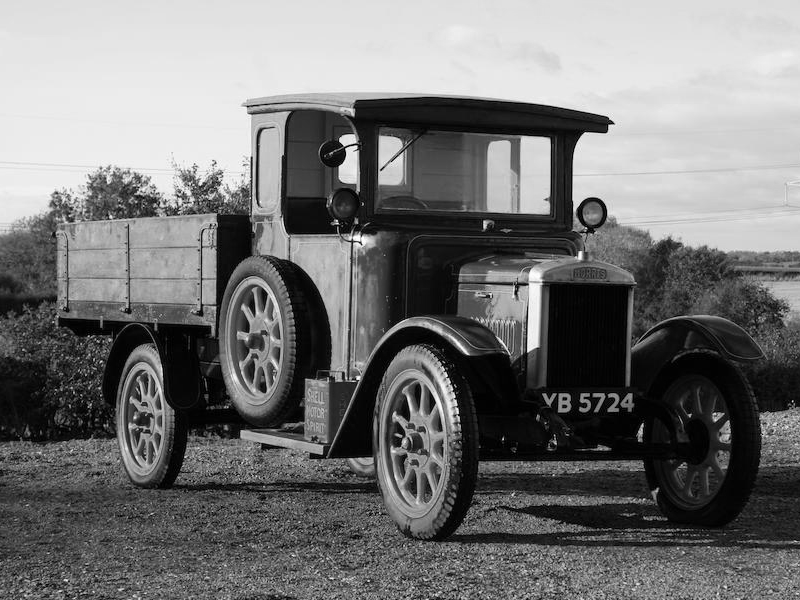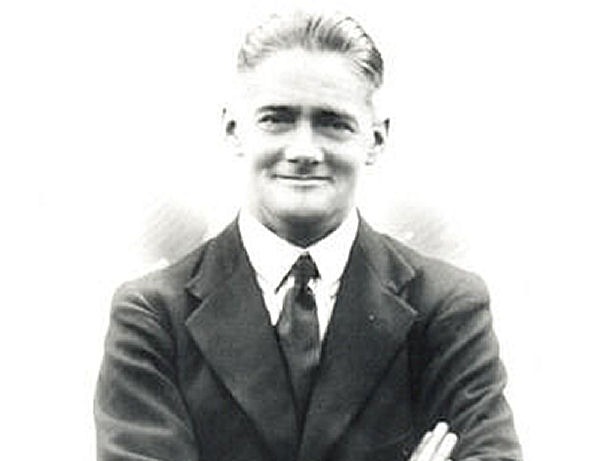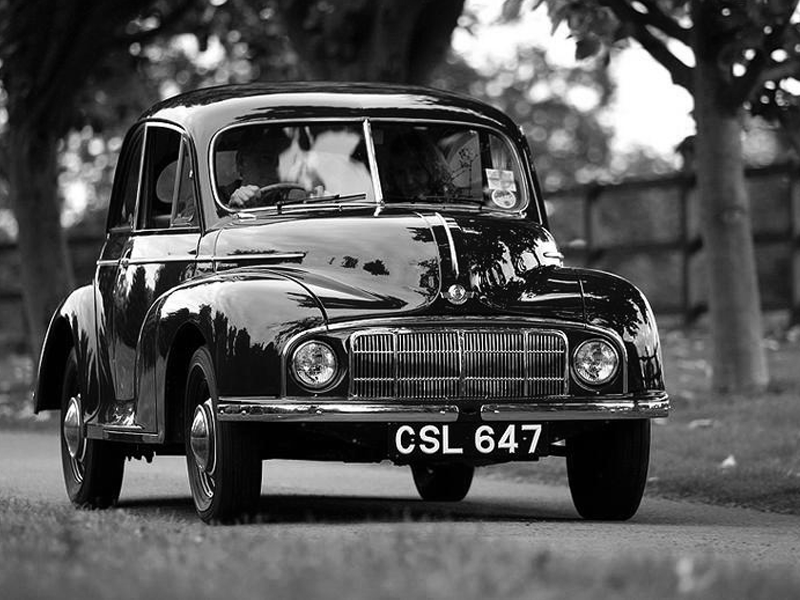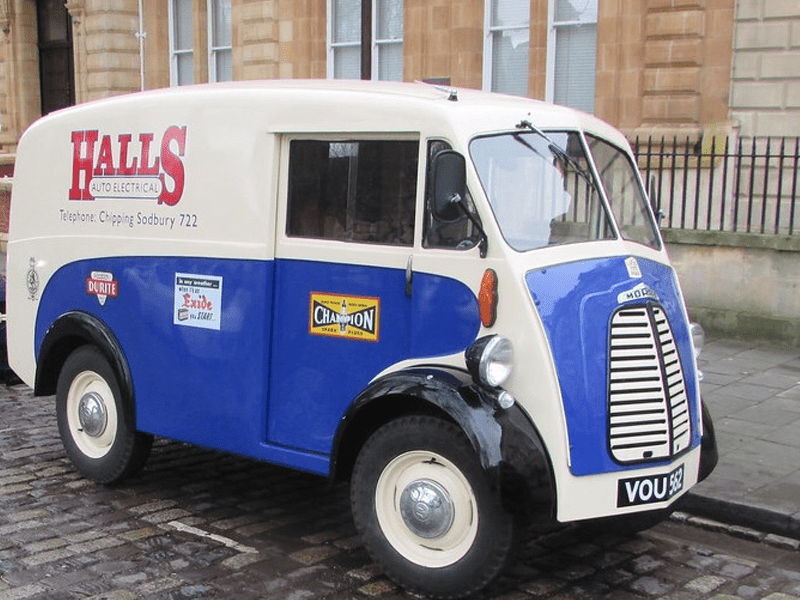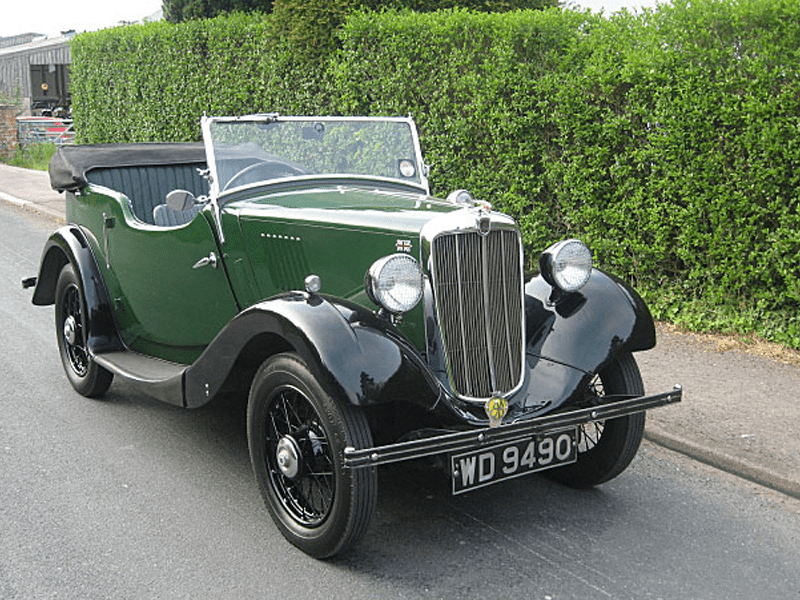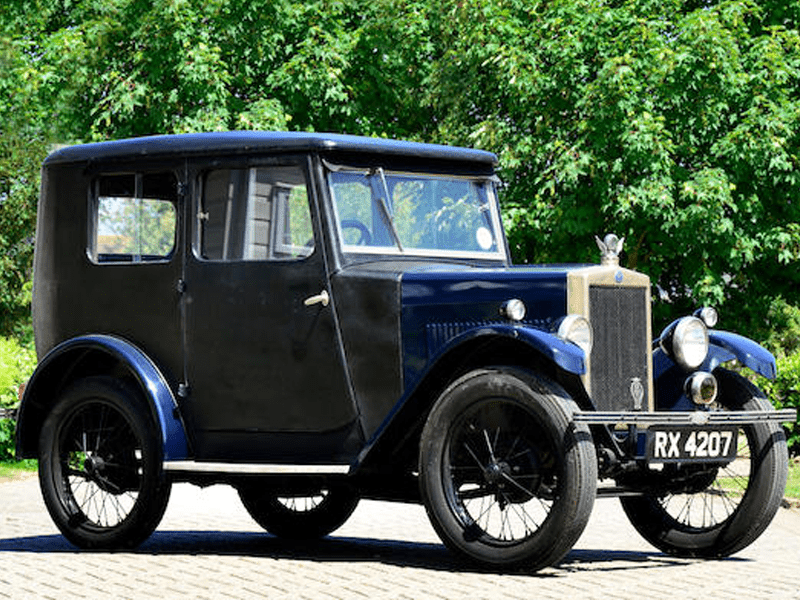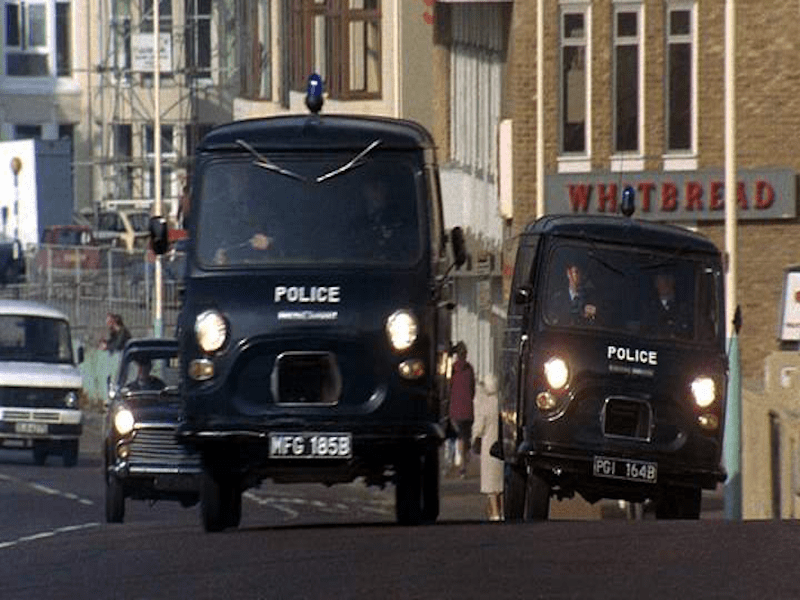MUCH LOVED MODELS
MORRIS minor
The charming Morris Minor perfectly symbolised Britain’s emergence from post-war austerity. Launched at the 1948 Earls Court Motor Show in London, the iconic Minor was a ‘new generation’ of small car. Precise rack and pinion steering and a lightweight structure resulted in superior handling for the economical Morris. Available in saloon, open-tourer, traveller and van body styles, the Minor became the first British motorcar to sell one million units. To this day a loyal Morris Minor owners community exists, made up of tens of thousands of members who still regularly use their cars.
Morris j-type
Launched alongside the Morris Minor at the 1948 London Earls Court Motor Show. The delightful J-type became Morris Commercials’ most iconic vehicle. A global van that would experience significant sales success in Britain and around the world. From large multinational organisations to prosperous independent businesses, the dependable J was the commercial vehicle of choice for many. To this day, J-types around the world remain in service, from starring in television dramas to working as dependable delivery vans. The J will never lose its timeless appeal.
MOrris oxford “bullnose”
The first motorcar manufactured by William Morris, The Morris Oxford came to market in 1913. Affectionately nicknamed the ‘Bullnose’, the Oxford established itself as a reliable, high-quality well-equipped vehicle that was aimed at the middle classes. To keep costs down, virtually all components were made by specialist manufacturers and then assembled by Morris at his state-of-the-art Cowley factory. The car started life as a two-seater open tourer and over its three years on sale was also built as a commercial delivery van.
MORRIS minor van
Following the success of the saloon and convertible variants of the Minor, Morris Motors introduced its estate, pick-up and van commercial vehicle derivatives in 1952. Built on a separate chassis frame and heavy-duty suspension to cope with heavier loads. The charming Morris Minor Van became a hit with the Royal Mail, the AA
Morris eight
The vehicle that enabled Morris to establish itself as the dominant motorcar manufacturer of the 1930s. The Morris Eight was William Morris’ answer to Ford’s popular Model Y, which by the time the Eight was launched in 1935, had enjoyed several years of strong sales in Britain. Available as either a saloon, open tourer or van derivative called the Series Z. Production for the well-equipped Eight continued through the war for both military use and export markets. Over 13 years 390,000 Eights were sold.
MORRIS mini-minor
The revolutionary Morris Mini-Minor was launched in August 1959 to compete with the German ‘bubble’ cars, which became popular due to fuel shortages in the UK, a result of the 1956 Suez Crisis. The brainchild of Alec Issignosis who had designed the Morris Minor, the pint-sized Mini became a cult classic. Successful on the racetrack, rally stage and a favourite on the big screen. The Mini appealed to generations young and old, countries far and wide, a truly classless car that retains its unique charm to this day.
MORRIS commercial type-g international taxi-cab
When Scotland Yard changed the regulations for taxicabs, Morris Commercial were quick to take advantage, launching the Morris Commercial Type-G International Taxi-Cab. Based on the chassis and running gear of the Morris Empire Oxford, the Type-G used a 15.9hp four-cylinder engine and was capable of 45 miles per hour. The front windscreen had one quarter missing, preventing the glass from misting up in the heavy London smog of the period. Approximately 840 of these London taxis were sold between 1929 and 1932.
1928 Morris minor
Launched at the 1928 London Motor Show, the 8hp Morris Minor was built to rival Austin’s highly successful 7hp Seven. Positioned in the ‘starter’ car market, at launch the Minor was available as a fabric top saloon and four-seater tourer body styles. Later came a two-seater Minor and a range of commercial vehicle derivatives including a 5-cwt panel van. The Minor made use of a simple ladder chassis and was powered by a Wolseley designed 847cc engine. After six successful years on sale, the Minor was replaced by the Morris Eight.
MORRIS j4
The Morris J4 was the successor to the highly successful Morris J-type. Launched in 1960, the J4 continued the principles that enabled its older sibling to be a world-wide hit; characterful styling, an ergonomic design and a generous choice of body styles and colours. Like the J, the J4 van has remained in service to this day, many frequenting the busy city streets of Britain, in service as boutique ice cream vans, food trucks and more. The perfect, eye-catching tool for generating business.
MORRIS minor traveller
In 1952 Morris Motors introduced a new variant of its Minor, along came the Traveller. The most iconic of all the Minor variants, the beautifully presented Traveller was an astonishingly practical estate that provided perfect utility for all scenarios. A truly distinctive car with its half-timbered rear bodywork, the Traveller proved a popular model within the Minor range and was sold until 1971. Today, there is a strong collector market for the Morris Minor Traveller with many examples meticulously restored to a ‘like new’ standard.

